Rossmax X9 BT Handleiding
Rossmax
Bloeddrukmeter
X9 BT
Bekijk gratis de handleiding van Rossmax X9 BT (13 pagina’s), behorend tot de categorie Bloeddrukmeter. Deze gids werd als nuttig beoordeeld door 26 mensen en kreeg gemiddeld 4.1 sterren uit 13.5 reviews. Heb je een vraag over Rossmax X9 BT of wil je andere gebruikers van dit product iets vragen? Stel een vraag
Pagina 1/13

www.rossmax.com
Model: X9
Blood Pressure Monitor

2
Blood pressure measurements determined with X9 are equivalent to those obtained by
a trained observer using cu/stethoscope auscultation method, within the limits pre-
scribed by the American National Standard, Electronic or Automated Sphygmomanom-
eters. This unit is to be used by adult consumers in home, physicians’ oces, hospitals,
clinics and other medical facilities. The patient is an intended operator. Do not use this
device on infants or neonates. X9 is protected against manufacturing defects by an es-
tablished International Warranty Program. For warranty information, you can contact
the manufacturer, Rossmax International Ltd.
Attention: Consult the accompanying documents. Please read this manual care-
fully before use. For specic information on your own blood pressure, contact your
physician. Please be sure to keep this manual.
Introduction
PARR(Pulse Arrhythmia) Technology
The upper chambers of the heart (the atria) do not contract, but quiver and thus blood
is driven irregularly and with lower eciency into the ventricles. Subsequently irregular
heartbeats occurs, which mostly are associated with a fast, yet highly instable heart rate.
Pulse Arrhythmia (PARR) technology specically detects the existence of pulse arrhyth-
mia, including atrial brillation (AFib), Atrial and / or Ventricular Premature Contractions
(PC), Tachycardia (TACH), and Bradycardia (BRAD). Pulse Arrhythmia may be related to
cardiac disorders, needs medical attention and thus early diagnosis is of paramount
importance. The PARR technology detects arrhythmia during regular blood pressure
checks without any additional user skills, user interaction and measurement prolonga-
tion. Beside the blood pressure diagnosis a specic pulse arrhythmia diagnosis is pro-
vided with PARR.
Note: The PARR detection of AFib, PC, TACH and BRAD is provided with a clinically
proven high detection probability [1]. However, the sensitivity and specicity is
limited, thus most, but not all pulse arrhythmia will be detected and displayed.
In certain patients with uncommon clinical conditions the PARR technology may
not be able to detect pulse arrhythmia. This partly comes from the fact that some
arrhythmia can only be found with an ECG diagnosis, but not with a pulse diagno-
sis. Thus PARR is not meant to replace any medical ECG diagnosis by your doctor.
PARR provides an early detection of certain pulse arrhythmia, which inevitably
need to be presented to your doctor in charge.
Remark: [1] Clinical Investigation of PARR - A new Oscillometric Pulse Arrhythmia Type
Discriminating Detection Technology
Atrial Fibrillation Detection (AFib)

4
A fast heart rate of higher than 100 beats per minute (bpm) in adults. Unless being
caused by physical or mental stress, a tachycardia may be an indicator for both cardiac
(e.g. Coronary heart disease, valvular disorder), or extra-cardiac disorders (e.g. hyperthy-
roidism, fever, hypoxemia), as well as medication and stimulant substance side eects
(e.g. caeine). The unit is able to detect Tachycardia (TACH). The ARR and TACH icons (
) are displayed right after the measurement if tachycardia has been detected.
Note: It is strongly recommended, that you consult your physician, if either the TACH
icon occurs newly for several times, or, if your TACH is known to your doctor, but
the incidence of TACH readings changes over time. Your doctor will then be able
to provide all required medical test and possible therapeutic procedures.
Tachycardia Detection (TACH)
A slow heart rate of less than 55 beats per minute (bpm) in adults. Unless not genetically
determined or subsequent to a high cardiac endurance training adaptation, bradycar-
dia may be related to multitude of cardiac disorders (e.g. valvular heart disease, heart
failure) or extra-cardiac disorders (e.g. hypothyroidism, electrolyte imbalance) or medi-
cations (e.g. beta-receptor blocker). This unit is able to detect Bradycardia (BRAD). The
ARR and BRAD icons ( ) are displayed right after the measurement if bradycar-
dia was detected.
Note: It is strongly recommended, that you consult your physician, if either the BRAD
icon occurs newly for several times, or, if your BRAD is known to your doctor, but
the incidence of BRAD readings changes over time. Your doctor will then be able
to provide all required medical test and possible therapeutic procedures.
Bradycardia Detection (BRAD
Once the occurrence of pulse arrhythmia has been detected in the course of your blood
pressure measurement, the icon ARR is displayed. In the case, that the found pulse ar-
rhythmia can be specied by the PARR technology, the ARR icon is accompanied by the
specically detected type of arrhythmia, e.g. PC, AFib, TACH or BRAD. Once the kind of
found pulse arrhythmia cannot be safely determined by PARR, the device is displaying
ARR without any additional pulse arrhythmia type icon.
Note: It is strongly recommended, that you consult your physician, if either the ARR icon
occurs newly for several times, or, if your ARR is known to your doctor, but the in-
cidence of ARR readings changes over time. This is independent whether the ARR
icon is specied by another pulse arrhythmia icon or not. Your doctor will then
be able to provide all required medical test and possible therapeutic procedures.
Pulse Arrhythmia Detection (ARR)
Product specificaties
| Merk: | Rossmax |
| Categorie: | Bloeddrukmeter |
| Model: | X9 BT |
Heb je hulp nodig?
Als je hulp nodig hebt met Rossmax X9 BT stel dan hieronder een vraag en andere gebruikers zullen je antwoorden
Handleiding Bloeddrukmeter Rossmax

18 April 2024

27 Maart 2024

27 Maart 2024

27 Maart 2024

11 Februari 2023

11 Februari 2023

11 Februari 2023

11 Februari 2023

11 Februari 2023

11 Februari 2023
Handleiding Bloeddrukmeter
- Esperanza
- Ion
- Sanotec
- Medisana
- Emporia
- Crane
- Hartmann
- Lanaform
- SunTech
- Prestigio
- Etekcity
- Konig
- Fysic
- Create
- Dr. Senst
Nieuwste handleidingen voor Bloeddrukmeter
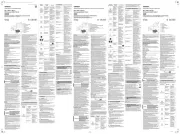
29 Juli 2025
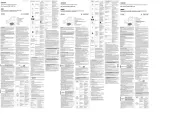
28 Juli 2025
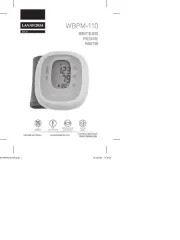
16 Juli 2025
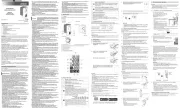
23 Mei 2025
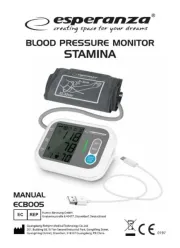
22 Mei 2025
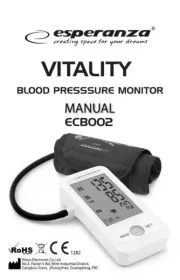
22 Mei 2025
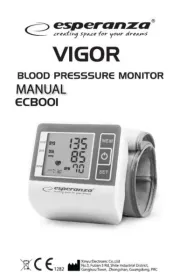
22 Mei 2025
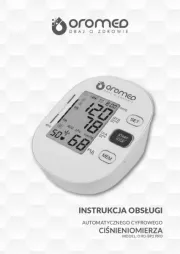
20 Mei 2025
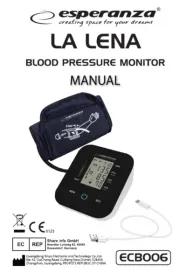
20 Mei 2025

20 Mei 2025